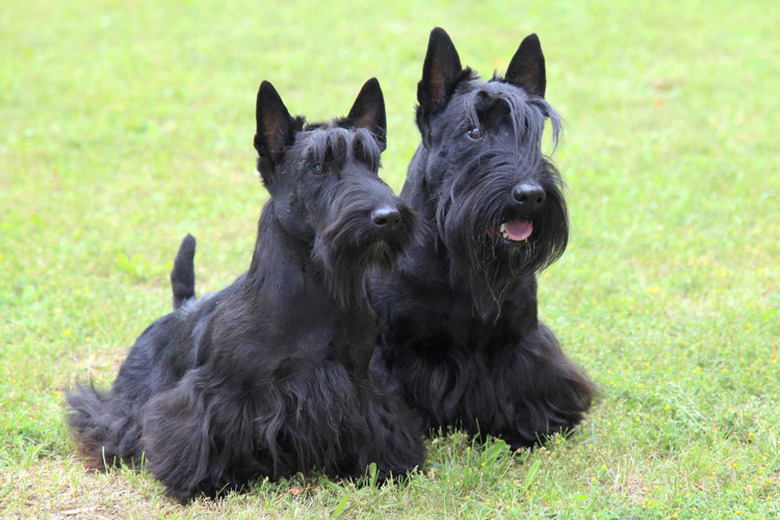Rough Coats Vs. Soft Coats On Dogs
Who isn't a fan of dogs with velvety fur? Dog with soft coats are lovely to own, though dog fur types are varied and come in a range of colors, lengths, and textures. Learning to care for each type of dog coat will result in clean and healthy fur for your pup. Using the right tools and picking up a few brushing techniques from a professional groomer will also help. As a result, your dog's fur coat will be your pride and joy and something you'll look forward to showing off when you're out for a stroll.
Dog fur types
Dog fur types
Generally speaking, there are two kinds of coats on canines: soft and rough. Dogs with soft coats may have long or short fur that's smooth and silky to the touch, though many soft-coated pups also have another type of fur called an undercoat directly below the outer one. Rough-coated dogs, on the other hand, have just the type of fur you'd expect: coarse, wiry, and possibly curly. Dogs with rough fur may also be described as having a broken coat, which is actually a combination of smooth fur along with patches of roughness, giving it a "broken" appearance.
Grooming dogs with soft coats
Grooming dogs with soft coats
Regularly brushing your dog's fur is beneficial in many ways, from helping to spread around natural oils and removing dirt to preventing snarls and keeping her free of fleas and ticks. If you have a soft-coated dog with short hair, like a beagle or boxer, plan to brush your pup's fur once a week with a rubber brush to dislodge dirt and then a bristle brush to whisk away dead fur.
For dogs with long, soft coats, like a cocker spaniel or Irish setter, you'll need to provide daily attention via a slicker brush or wide-tooth comb to smooth tangles, followed by a bristle brush. As for shampoo, read labels carefully so you select one that matches your pup's fur.
Grooming dogs with rough coats
Grooming dogs with rough coats
Rough, wiry, and broken coats, like those seen on most terrier types, require a different kind of coat maintenance using two tools: a stripper comb and a slicker brush. The stripper removes tangles and mats by thinning out the fur, and the slicker smooths the coat.
If the matting is rather thick on your dog's fur, you may need to clip away portions of the coat. Curly haired pups benefit from a soft slicker brush to groom their waves so they're shiny and bouncy. Take extra care with a dog who has long, coarse fur, as knots and mats are common. Brush gently with a slicker and then a bristle brush.
Shiny dog coat supplements
Shiny dog coat supplements
If your dog's fur doesn't appear shiny even after a shampoo and regular grooming, check in with your pet's vet. Remember that the health of your dog, particularly his stress levels and nutritional intake, is reflected in his fur's appearance. A very anxious dog will shed more than usual, resulting in a patchy, unhealthy coat. A dull, dry coat could be an indication that your canine isn't consuming enough omega-3 fatty acids in his diet. The right food and possibly supplements (ask the vet first though) could be all he needs to regain a shiny coat.
Lusterless fur may also point to a hormone imbalance, an endocrine issue related to your animal's thyroid, or a case of allergies. Gastrointestinal distress, like diarrhea, intestinal worms, and flea or tick infestations, can also negatively impact a dog's fur. If your dog isn't able to groom himself effectively because obesity or arthritis is hindering his movements, his coat could suffer.
References
- American Society for the Prevention of Cruelty to Animals: Dog Grooming Tips
- American Kennel Club: These Flowing, Glamorous Coats Give Us Breed Envy
- American Kennel Club: Dog Shampoos: How to Find the Right One for Your Dog
- VCA Animal Hospitals: Coat and Skin Appearance in the Healthy Dog
- American Kennel Club: 5 Common Dog Illnesses That Are Impacted by Nutrition
